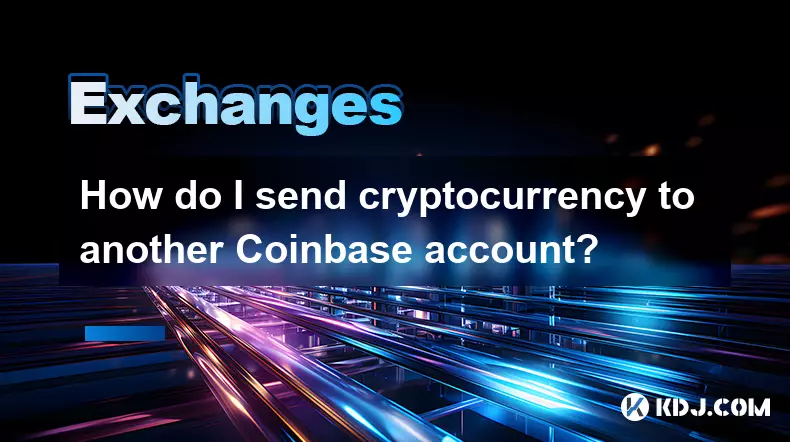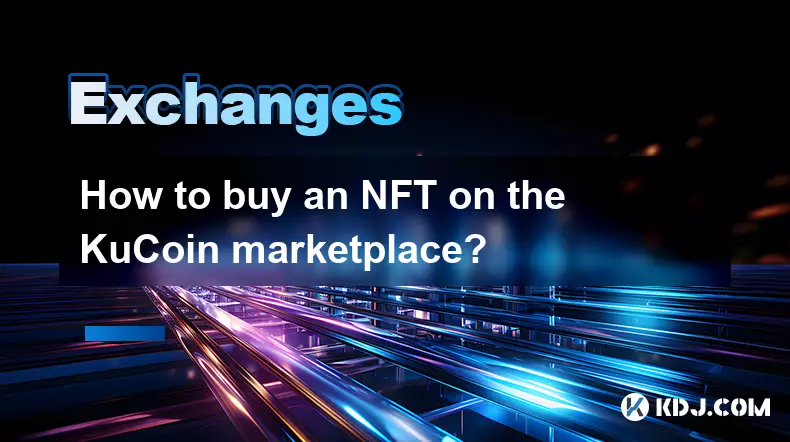-
 bitcoin
bitcoin $122288.232522 USD
0.16% -
 ethereum
ethereum $4480.662914 USD
-0.22% -
 xrp
xrp $2.962747 USD
-2.32% -
 tether
tether $1.000120 USD
-0.05% -
 bnb
bnb $1145.654223 USD
-2.07% -
 solana
solana $227.105217 USD
-1.67% -
 usd-coin
usd-coin $0.999548 USD
-0.02% -
 dogecoin
dogecoin $0.250875 USD
-2.04% -
 tron
tron $0.340654 USD
-0.49% -
 cardano
cardano $0.837968 USD
-2.52% -
 hyperliquid
hyperliquid $48.960449 USD
0.06% -
 chainlink
chainlink $22.049280 USD
-1.33% -
 ethena-usde
ethena-usde $1.000404 USD
0.02% -
 sui
sui $3.586212 USD
0.20% -
 avalanche
avalanche $29.894916 USD
-4.18%
How do I send cryptocurrency to another Coinbase account?
Sending crypto on Coinbase is simple: log in, choose your asset, enter the recipient’s info and amount, review fees and details, then confirm with 2FA for security.
Sep 29, 2025 at 04:55 pm

Understanding the Basics of Sending Cryptocurrency on Coinbase
1. Logging into your Coinbase account is the first necessary step to initiate any transaction. Once inside, navigate to the 'Accounts' section where all your supported cryptocurrencies are listed. Each digital asset has its own wallet interface, allowing for individual management.
2. Select the cryptocurrency you wish to send. Clicking on the specific asset opens a detailed view that includes your balance, recent transactions, and available actions such as “Send” and “Receive.” Choosing “Send” launches the transfer interface.
3. You will be prompted to enter the recipient’s information. This can be done using their email address linked to a Coinbase account, their phone number, or a public wallet address. If both parties use Coinbase, sending via email or phone is faster and user-friendly.
4. Enter the amount of cryptocurrency you'd like to transfer. The platform automatically calculates the equivalent in fiat currency based on current market rates, offering transparency in value. Always double-check the amount before proceeding.
5. Review the transaction details carefully. Coinbase displays the network fee (if applicable), the recipient’s identifier, and the total amount leaving your wallet. Confirm the accuracy of each field to prevent irreversible mistakes.
Security Measures During Cryptocurrency Transfers
1. Two-factor authentication (2FA) plays a crucial role in protecting your transfers. Before confirming any send request, Coinbase may require verification through an authenticator app, SMS code, or biometric login depending on your security settings.
2. Suspicious activity triggers additional verification layers. If the system detects unusual behavior—such as sending funds to a new recipient or large-volume transfers—it might temporarily block the action until identity confirmation is completed.
3. Email confirmations are sent for every outgoing transaction. Even after internal approval, Coinbase sends a follow-up message to your registered email with a link to cancel the transaction within a short window, adding a safeguard against unauthorized access.
4. Recipient validation prevents accidental losses. When using email or phone, Coinbase checks whether the recipient has an active account. If not, the funds remain in limbo until the recipient signs up, reducing risks of permanent misplacement.
5. Transaction limits are imposed based on account verification level. Newer accounts face lower daily caps, which increase as trust and identity verification progress. These restrictions mitigate fraud and align with regulatory compliance standards.
Network Fees and Processing Times Explained
1. Internal transfers between Coinbase users typically incur no network fees. When sending crypto to another person on Coinbase using their email or phone, the movement happens off-chain within Coinbase’s database, making it instant and cost-free.
2. On-chain transactions involve blockchain network costs. If you're sending to an external wallet or a non-Coinbase user via a public address, gas fees or miner fees apply. These depend on network congestion and the selected cryptocurrency.
3. Processing times vary significantly. Internal transfers complete within seconds. External ones may take minutes to hours, especially during peak usage on networks like Ethereum or Bitcoin. Delays are influenced by confirmation requirements and validator throughput.
4. Fee customization is limited on Coinbase. Unlike advanced wallets, Coinbase automatically sets the fee based on current network conditions. Users cannot manually adjust it, prioritizing simplicity over granular control.
5. Transaction tracking is available through the activity feed. Each transfer generates a record with status updates—pending, confirmed, failed—alongside blockchain explorer links for on-chain movements, enabling real-time monitoring.
Frequently Asked Questions
Can I reverse a cryptocurrency transaction on Coinbase?Once confirmed, cryptocurrency transactions cannot be reversed. If you send funds to the wrong address, contact Coinbase support immediately. Recovery is only possible if the recipient is cooperative or the transfer was internal and still pending.
What happens if I send crypto to someone who doesn’t have a Coinbase account?If you use an email or phone number and the recipient isn’t registered, they’ll receive an invitation to claim the funds. They must create a Coinbase account within a set period; otherwise, the transaction expires and funds return to your wallet.
Are there taxes associated with sending crypto between Coinbase accounts?Transferring crypto between your own wallets or to others may trigger tax events depending on jurisdiction. In many regions, gifting cryptocurrency above certain thresholds is taxable. Consult a tax professional for accurate reporting.
Why does my transaction show as pending for a long time?Pending status usually indicates network congestion or low attached fees for on-chain transfers. Internal transfers should finalize instantly. For delays beyond expected timeframes, check the blockchain explorer linked in your transaction details.
Disclaimer:info@kdj.com
The information provided is not trading advice. kdj.com does not assume any responsibility for any investments made based on the information provided in this article. Cryptocurrencies are highly volatile and it is highly recommended that you invest with caution after thorough research!
If you believe that the content used on this website infringes your copyright, please contact us immediately (info@kdj.com) and we will delete it promptly.
- BlockDAG, DOGE, HYPE Sponsorship: Crypto Trends Shaping 2025
- 2025-10-01 00:25:13
- Deutsche Börse and Circle: A StableCoin Adoption Powerhouse in Europe
- 2025-10-01 00:25:13
- BlockDAG's Presale Buzz: Is It the Crypto to Watch in October 2025?
- 2025-10-01 00:30:13
- Bitcoin, Crypto, and IQ: When Genius Meets Digital Gold?
- 2025-10-01 00:30:13
- Stablecoins, American Innovation, and Wallet Tokens: The Next Frontier
- 2025-10-01 00:35:12
- NBU, Coins, and Crypto in Ukraine: A New Yorker's Take
- 2025-10-01 00:45:14
Related knowledge

How to close my position in KuCoin Futures?
Oct 01,2025 at 07:54pm
Understanding Position Closure in KuCoin FuturesTrading futures on KuCoin requires a clear understanding of how to manage open positions. Closing a po...

How to find the contract address for a token on KuCoin?
Sep 30,2025 at 09:00pm
Finding the Contract Address on KuCoin1. Log into your KuCoin account through the official website or mobile application. Navigate to the 'Markets' se...

How to set up SMS verification on my KuCoin account?
Oct 03,2025 at 12:36am
How to Enable SMS Verification on Your KuCoin AccountSecuring your cryptocurrency exchange account is essential, especially on platforms like KuCoin w...

How to update the KuCoin app to the latest version?
Oct 03,2025 at 02:18am
How to Update the KuCoin App: A Step-by-Step GuideKeeping your KuCoin app updated ensures access to the latest security features, trading tools, and u...

How to buy an NFT on the KuCoin marketplace?
Oct 02,2025 at 10:19pm
Accessing the KuCoin NFT Marketplace1. Log in to your KuCoin account through the official website or mobile application. Ensure that two-factor authen...

How to create a sub-account on KuCoin?
Oct 03,2025 at 10:18pm
Accessing the KuCoin Dashboard1. Navigate to the official KuCoin website and log in using your registered email and password. Two-factor authenticatio...

How to close my position in KuCoin Futures?
Oct 01,2025 at 07:54pm
Understanding Position Closure in KuCoin FuturesTrading futures on KuCoin requires a clear understanding of how to manage open positions. Closing a po...

How to find the contract address for a token on KuCoin?
Sep 30,2025 at 09:00pm
Finding the Contract Address on KuCoin1. Log into your KuCoin account through the official website or mobile application. Navigate to the 'Markets' se...

How to set up SMS verification on my KuCoin account?
Oct 03,2025 at 12:36am
How to Enable SMS Verification on Your KuCoin AccountSecuring your cryptocurrency exchange account is essential, especially on platforms like KuCoin w...

How to update the KuCoin app to the latest version?
Oct 03,2025 at 02:18am
How to Update the KuCoin App: A Step-by-Step GuideKeeping your KuCoin app updated ensures access to the latest security features, trading tools, and u...

How to buy an NFT on the KuCoin marketplace?
Oct 02,2025 at 10:19pm
Accessing the KuCoin NFT Marketplace1. Log in to your KuCoin account through the official website or mobile application. Ensure that two-factor authen...

How to create a sub-account on KuCoin?
Oct 03,2025 at 10:18pm
Accessing the KuCoin Dashboard1. Navigate to the official KuCoin website and log in using your registered email and password. Two-factor authenticatio...
See all articles










































































